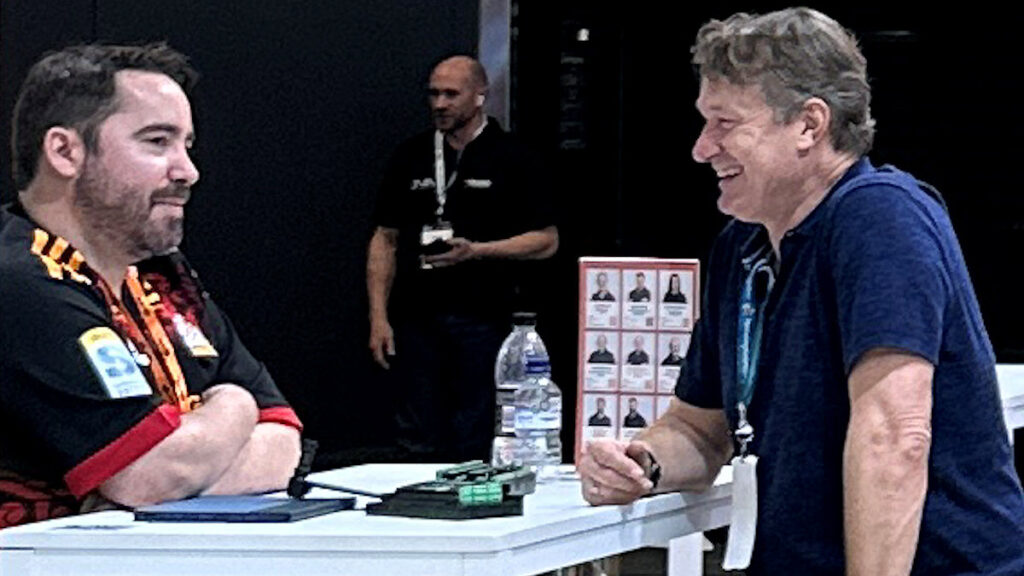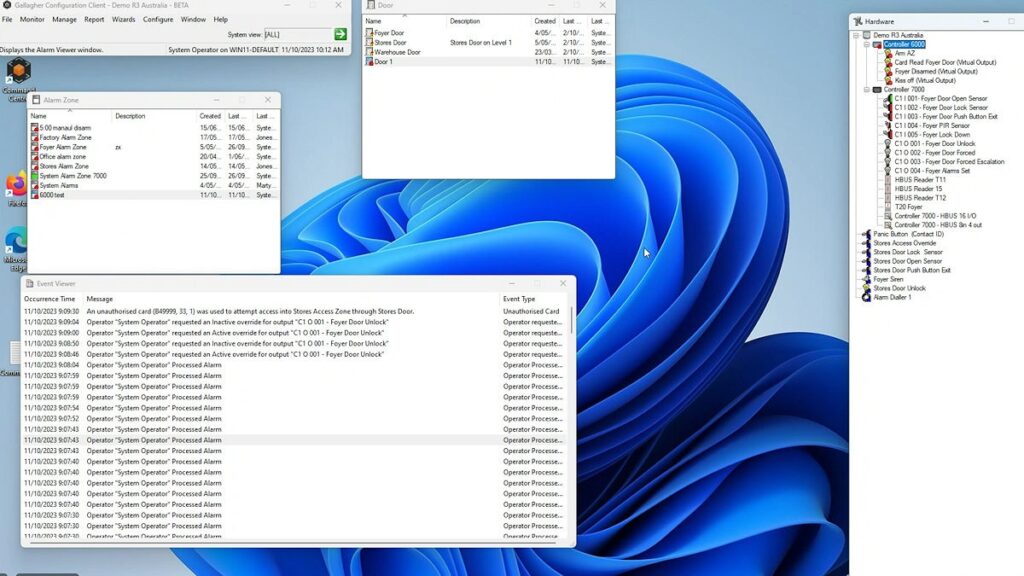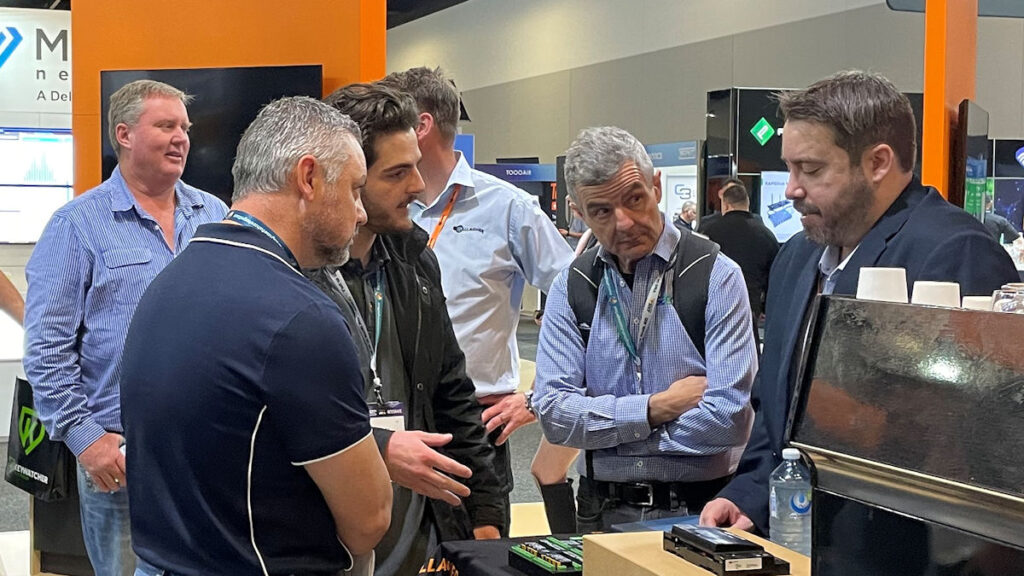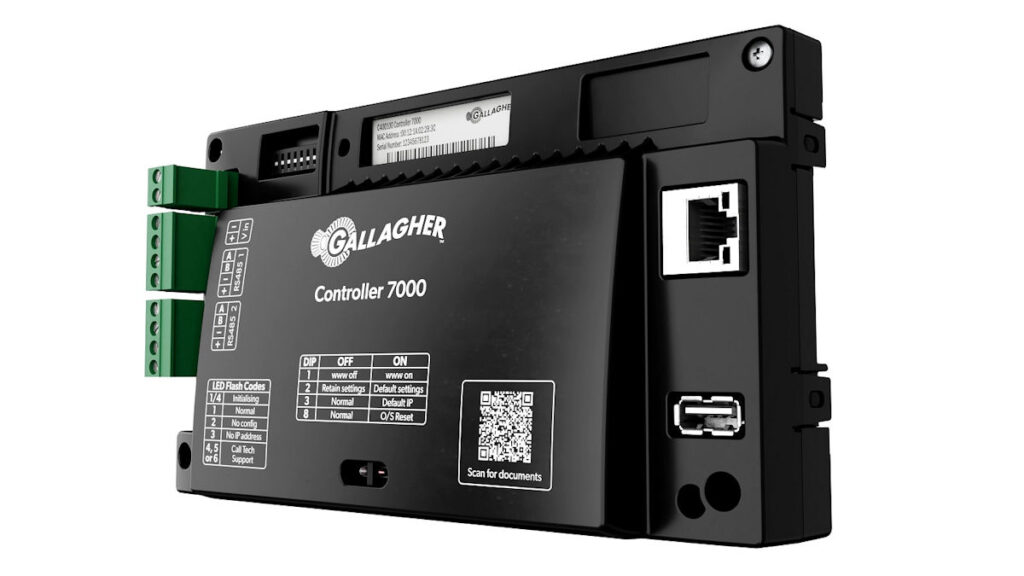Mike Margrain Talks Gallagher C7000 Due For Release In November.
Mike Margrain Talks Gallagher C7000 – At the recent Integrate & Security show SEN editor John Adams sat down with Gallagher’s regional technical manager for Asia Pacific & IMEA, Mike Margrain, to get the low-down on the company’s powerful new Controller 7000.
JA: What is the Gallagher C7000, and why is it so important to Gallagher integrators and end users moving forward?
MM: This new Controller 7000 Standard is an exciting addition to the Gallagher controller range, joining the 7000 Single Door Controllers released in early 2023. The new Controller 7000 Standard effectively becomes the replacement of the 6000 Controller, released over a decade ago.
When initially released, the 6000 Controller redefined what was possible with a security controller, and we delivered many new capabilities over the years that followed through software updates. With the new 7000 Controllers, we are once again redefining what’s possible, with another industry leap to provide a platform for the future – allowing us to deliver new capabilities not possible on older hardware.

JA: Given the C6000 was released in 2009, completely new hardware makes the C7000 a big deal, doesn’t it?
MM: The Controller 7000 is a very big deal. The C6000 was a very capable controller, but this C7000 controller is more than 10x faster, it has 8x the memory, and dozens of times the capacity. As with the Single Door Controller we released earlier this year, the C7000 stores 1 million offline events and 2 million cardholders offline. We’re measuring access control decisions on it at 8ms – that’s lightning fast.
While we do have customer systems of this kind of scale, the performance necessary to support such scale is something that benefits all customers. When we design new hardware, we put a lot of consideration into cybersecurity trends and ensure the devices can deliver unparalleled user experiences while still being able to retain that performance as we deliver future enhancements through software updates.
JA: How much input did you get from integrators in terms of what to change and what to retain when it came to such a major hardware upgrade?

MM: We conducted a lot of market research, with our channel partners overwhelmingly telling us to not change the physical footprint and layout because they love the installation experience of the 6000 – down to the location, labelling, and size of the connectors.
Taking this into account, we made a conscious decision not to change any of those aspects of the controller. This means when upgrading from a C6000 to a C7000, even if it has plug-in modules, you’re basically just detaching the controller, pulling some connectors off, attaching the 7000 Controller and reconnecting those connectors.
To make this upgrade process as easy as possible and reduce labour costs to customers, we have created a software function that allows techs to do simple software configuration conversion from the C6000 controller to the C7000. This translates to a 15-minute process for software and hardware changeover.
Mike Margrain Talks Gallagher C7000
JA: Must installers position the new controller in parallel with the old controller then cutover, does the controller go offline for a short time during upgrade, or is there another strategy?
MM: What we suggest, is that in software, installers disable communication to the controller, and then do the configuration conversion. The controller will operate completely standalone while software changes are being made. Once they’ve completed the software, they go to the hardware and do the physical swap. When the 7000 comes online, the configuration will automatically get pushed down into the new controller – and they’re done.
JA: All the same cabling?
MM: All the same cabling – they just pull the old controller off and mount the new one, then reconnect the connectors I mentioned earlier – they don’t have to change anything else. We have many C7000s running on production systems already, and the hardware changeover has commonly been a 10-minute process.
With the simple configuration migration process, it’s going to be a super-seamless process for technology upgrades that reduces the customer’s labour costs and outage times for any devices connected to the controller.

JA: One of the key capabilities of the C7000 is cyber security – Gallagher has invested heavily in cyber security right down to the way boards are securely programmed – how much effort went in?
MM: Cyber attacks have become more common and more sophisticated in recent years. Increasingly, customers are looking for assurances that the devices responsible for protecting their people and assets are up to the task for years ahead. Cybersecurity has been a huge focus in the development of the 7000 Controller range – including in the manufacturing process to prevent supply chain attacks.
We learn a lot through our strengths in the high security space by working with government agencies around the world, and we endeavour to put as much of that into our Command Centre platform, including our hardware devices – that includes cyber security capabilities.
These controllers run dual-operating systems, with a Secure World for device secrets, such as private keys and certificates, plus a Normal World for the operating system and application code. There’s hardware isolation between these datastores, and we can guarantee the integrity of the devices with secure key loading and immutable device identifiers.
The controllers also support anti-rollback functionality, so if a firmware version ever had a vulnerability, we can prevent insider attacks where an administrator might be socially engineered into installing an older vulnerable piece of code – by preventing such code from running.
Our factory security has been improved for secure device key loading. Access to master certificates requires a strict process using dual authorisation from privileged personnel with triple-factor authentication on hardened redundant devices stored at secure facilities at opposite ends of the country.
A serious level of thought and effort has gone into the security of these controllers because, as I say, attacks are getting more and more sophisticated, and we plan years ahead to provide our customers with unparalleled cybersecurity protection in our platform.

JA: We’ve touched on performance – the C7000 is much faster – how important is that in terms of ensuring the new controller can handle accelerating developments in the future?
MM: We consider the C7000 to be our hardware platform for the future. Gallagher has a proven track record in planning for the future and delivering enhancements to existing customers over time. In the years following the release of the 6000 Controller, we delivered many new capabilities to that controller – including cybersecurity improvements, support for new protocols and devices, and new user experiences at the door.
With the next performance leap that we’re taking with the 7000 Controller range, we’re looking to the future yet again. We’re already working on new capabilities for the 7000 Controller range, and we’ll continue to do that for many years to come. The flexibility and performance of our platform allows us to seamlessly deliver updates to controllers and downstream HBUS devices, such as readers, through simple software updates on the server. Customers with Gallagher Care Plan will continue receiving these improvements over time, as with any other software update.
Mike Margrain Talks Gallagher C7000 Controller
JA: Does the C7000 run on the same versions of Command Centre as the C6000, or is there an upgrade coming that supports it?
MM: The next software release that supports the C7000 is Command Centre v9, which will be released in November. Following this software upgrade, 7000 Standard controllers can be installed on the customer’s system.

JA: What does the future hold for the previous generation, the 6000 Controller?
MM: We have many thousands of global customers with 6000 Controllers installed, and we will continue to provide support for those devices until July 2031. Crucially, a Command Centre system can have a mixture of 6000 and 7000 Controllers, and they’ll even securely communicate with each other in the absence of server comms, as needed. This allows customers to perform technology upgrades at their own pace whilst retaining current software support – and ultimately, they will have received more than 20 years of software support by the time support for 6000 Controllers ends.
To support customers who require time to upgrade their system (to Command Centre v9 or beyond), we will continue selling 6000 Controllers for the foreseeable future – but we do recommend customers make plans to upgrade their systems to install the latest hardware that future proofs them with the next era of electronic security.
We pride ourselves on the longevity of our support, having also done this with prior generation controllers – with some customers seamlessly transitioning controller devices over a 30+ year period, all while retaining current software support and protection.
You can read more about Gallagher C7000 here or more SEN news here.
“Mike Margrain Talks Gallagher C7000 Due For Release In November.”











